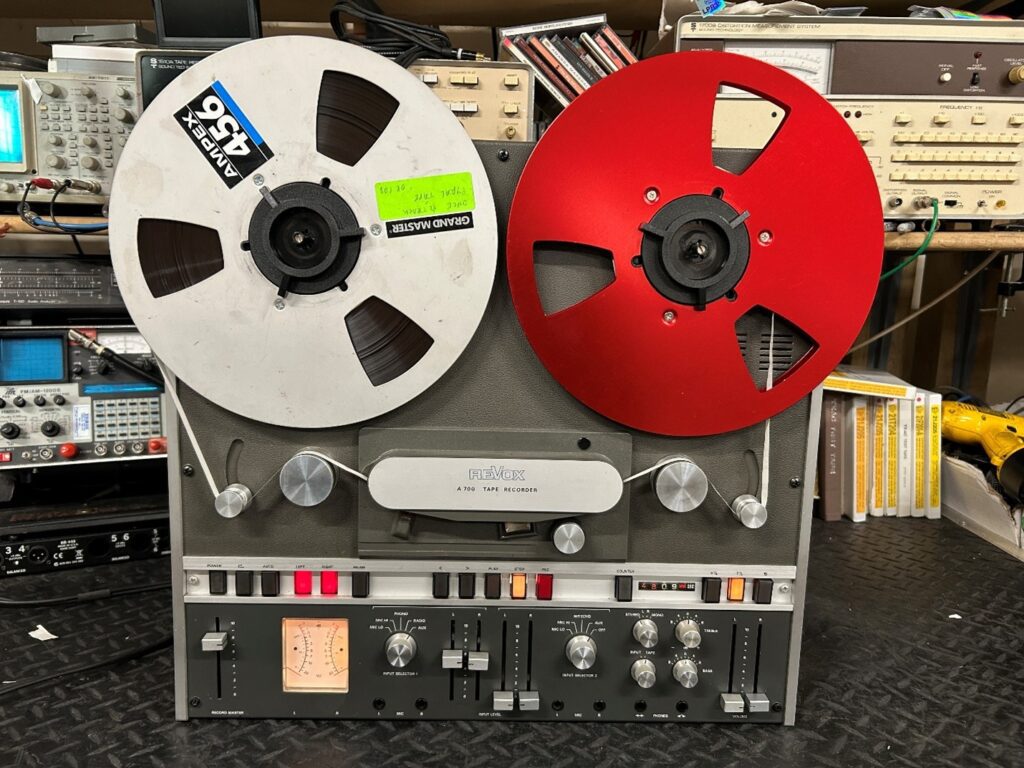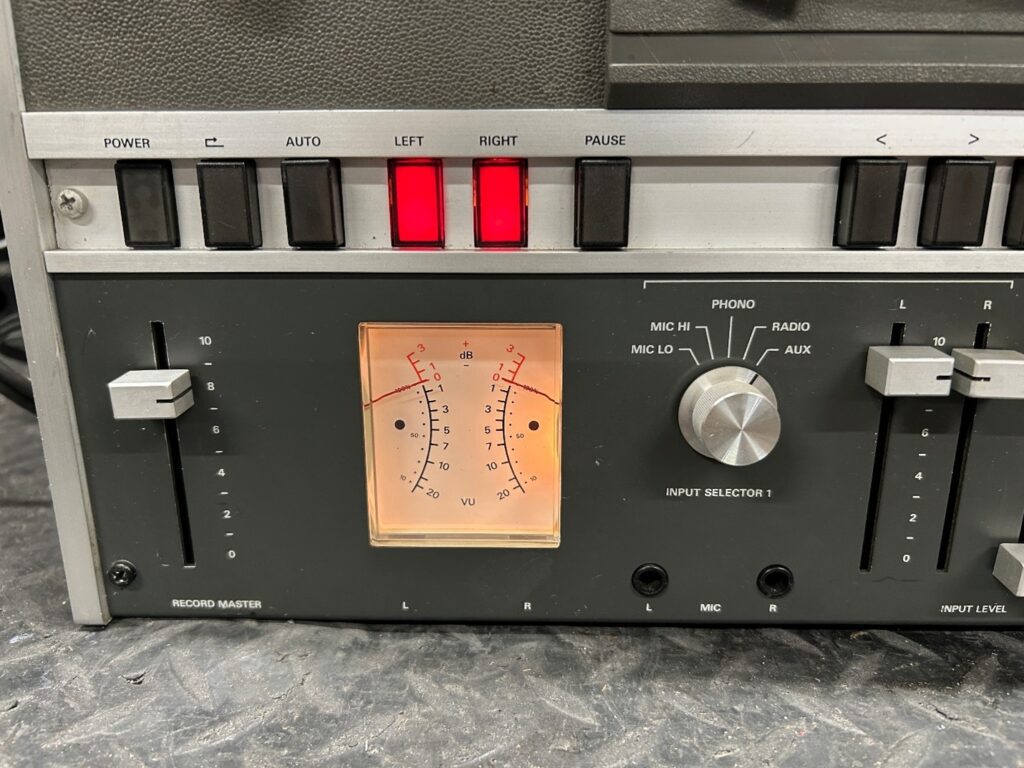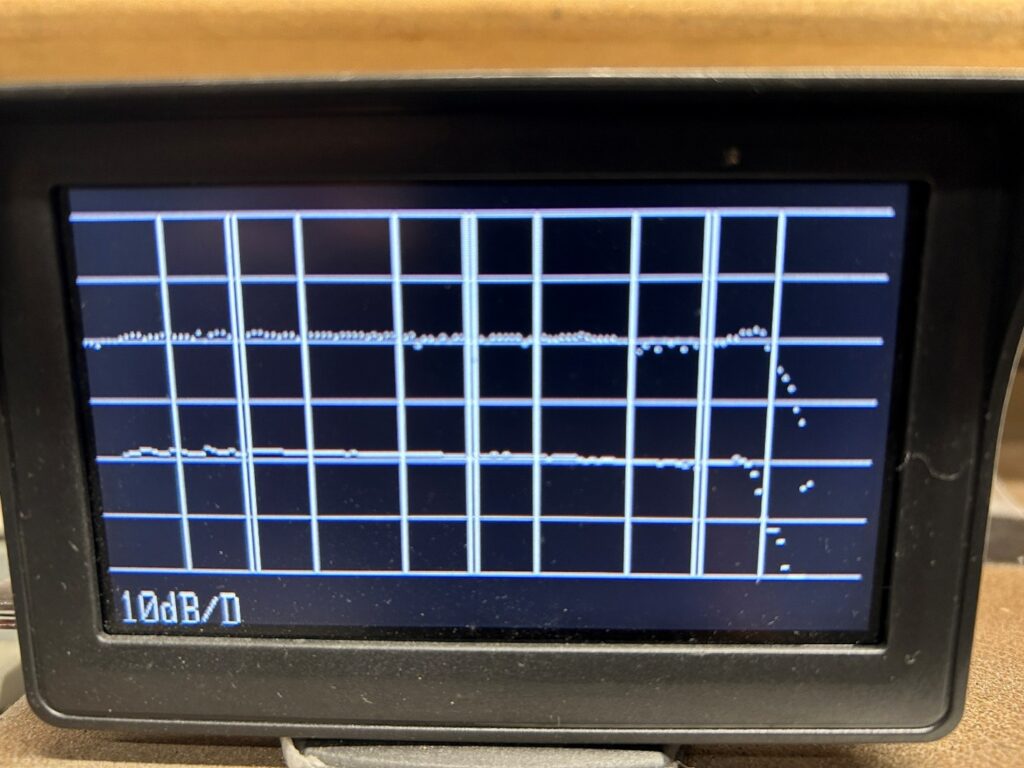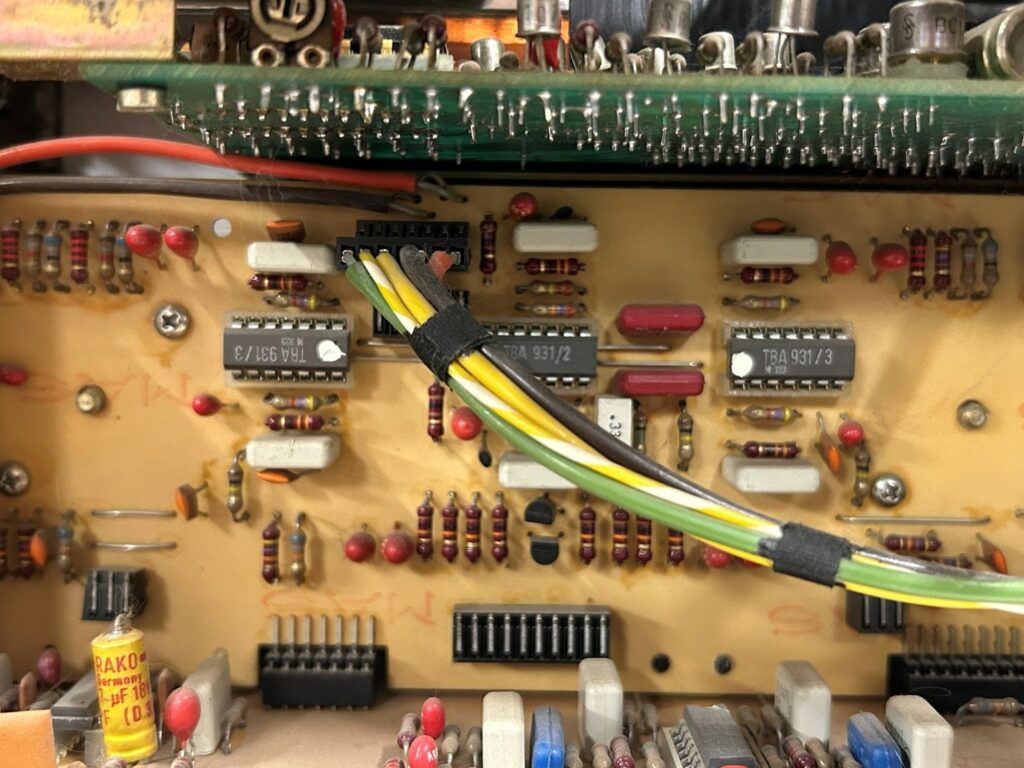The Revox A700 is a bit of a unique deck in that it has a built in preamplifier, including a magnetic phono input, and is the only consumer deck that Revox made that has 3 speeds. All other models (save for some of the pro units) have only two speeds.
The pro equivalent of the A700 is the Studer B67. Both units share a number of parts, although the B67 did away with the unique VU meters and the slide controls.

The pros and cons of the A700 are as follows:
Pros:
- 3 speeds. Most of the A700s made were selectable from 3 ¾ to 15 IPS, however you could also custom order these in any 3 adjacent speeds you wanted. We recently picked up a rare ‘logging’ recorder version, that ran from 15/16 IPS to 3 3/4.
- excellent tape handling. With the dual tension arms, the deck is exceptionally gentle on tapes, and is great for playing or digitizing old brittle tapes.
- relatively easy to service. Most of the PC boards come out easily with the exception of the main audio motherboard (which generally is reliable) so changing capacitors isn’t too difficult.
- built in phono preamp. Revox designed this deck to replace your preamplifier, as it has two aux inputs, a radio input, and a turntable input. With dual sets of input faders, you could DJ with your sources by fading out one source while fading up another. This ‘reel to reel with a built in preamp’ didn’t prove to be too successful of a concept, as the amount of inputs is a bit limited. Not everyone wants their RTR deck running when they want to listen to the radio.

- the A700 is one of the flattest frequency response decks we’ve seen through our shop in the consumer range of decks. With the deck being virtually flat to 20Khz at all three speeds, it’s an excellent deck to digitize tapes with.

- the head block is swappable, so with a spare head block, you can switch the deck from ¼ track to ½ track. The trick is to find that spare head block.
- lots of eq and bias controls are available, one set for each speed, so it’s easy to dial in the A700 for optimum performance for various tape formulations for all three speeds.
Cons:
- as with all Revox decks, these A700s need a full recapping. There are 9 exploding Rifa motor caps in this deck, plus the regular assortment of Frako capacitors that are known to fail.
- defective VU meters. This is one of the most common problems with these A700s. Revox used a dual VU meter set unique to the A700, and as with the other Revox VU meters, the glue bonds fail, resulting in one or both meters that are dead. As of this writing (November 2025), used VU meters are $250 US on eBay, and a new LED digital replacement meter runs close to $340 US with shipping from Germany.
- defective slide pots. While these slide pots can be cleaned, if one of the plastic shafts snap, then unless you find a used one on eBay, you’re forced to buy a custom built replacement set of all 7 sliders for around $175 US including shipping from Germany. These appear to be custom slide pots made for the A700, and are unique in that the mounting screws go into the back of the faders, not the front.
- unique chips used in parts of the A700. Some of the audio chips, the transport chip, and the capstan motor control chips have long been discontinued and are very hard to find. The audio chips are cloned (see our online store for replacements), whereas the motor and transport chips are harder to find.

- brittle front push button assemblies. If the deck has been left on for hours at a time, as in a recording studio, on occasion the push-button switches can get brittle and break internally, or snap the shaft. This seems to be more common in the pro studio version of this deck, the B67, and again, these push-button assemblies are unique to the A700 and B67 models of decks.
- weak carrying handle. As with the Revox A77 that is roughly the same age, don’t trust the carrying handle on these decks! They can get brittle, and then snap at the worst time.
- poor quality RCA input and output connections, that are mounted directly to the audio motherboard.
Overall, the deck is an excellent performer, however treat the deck with care, as some of the parts are difficult to find.
